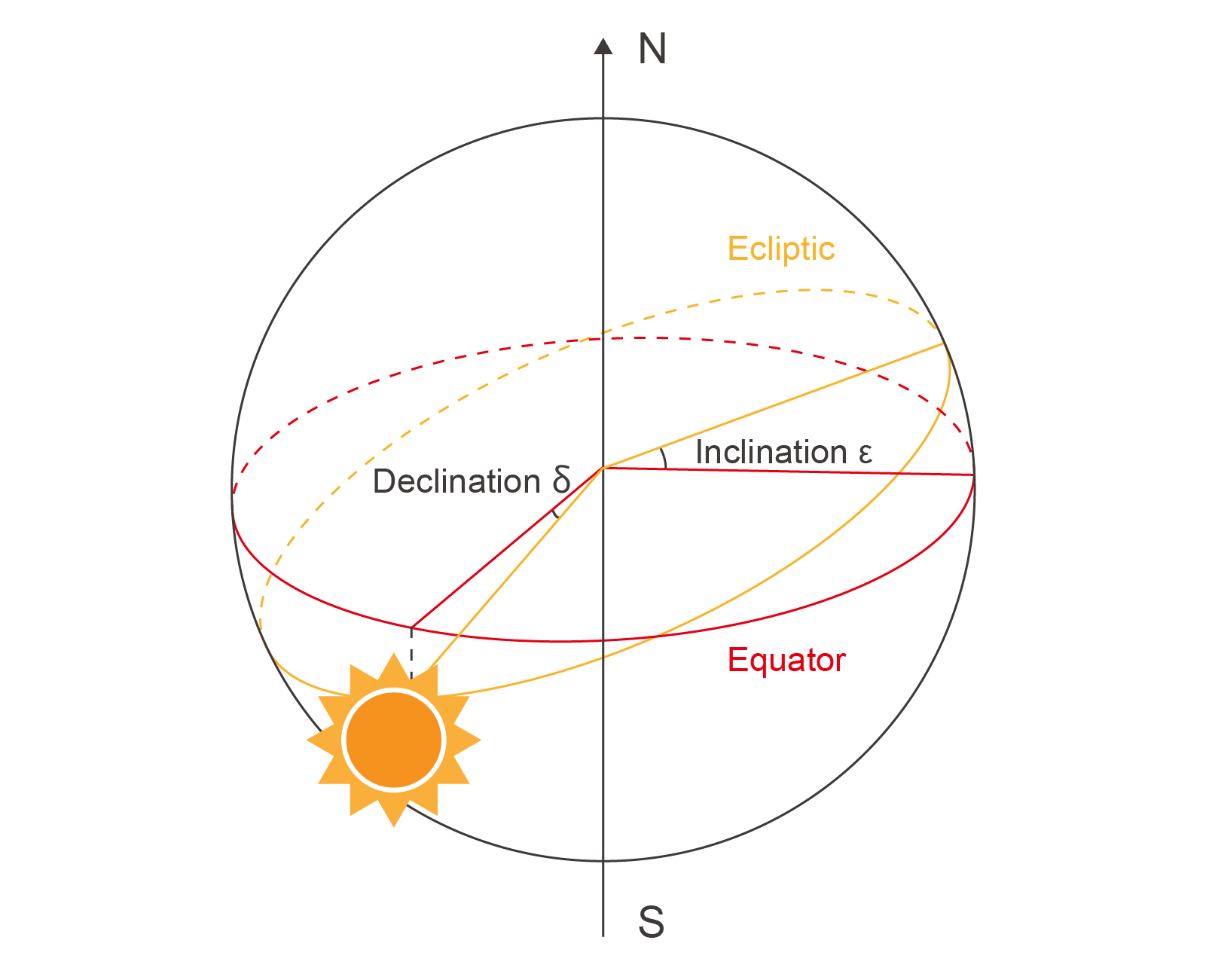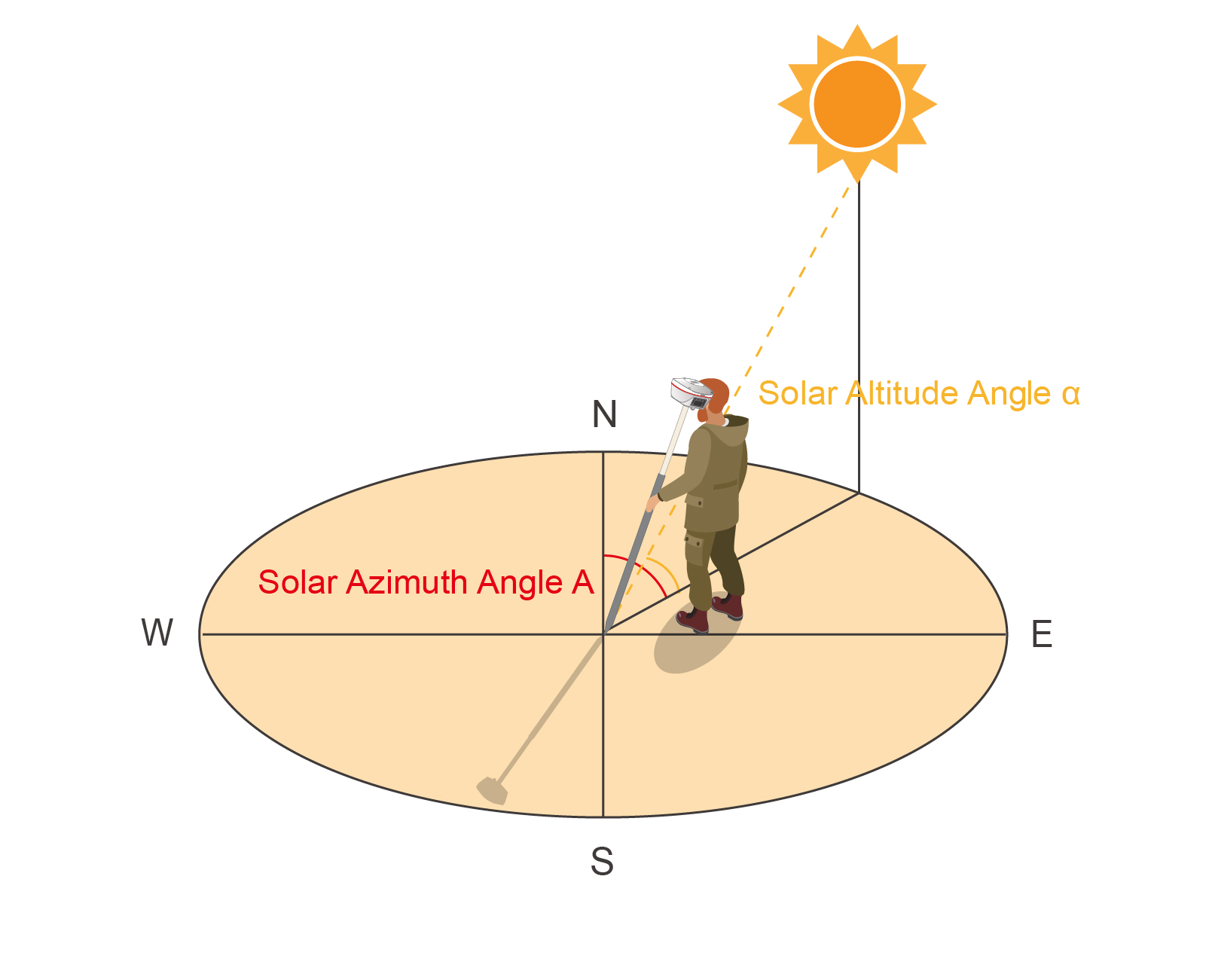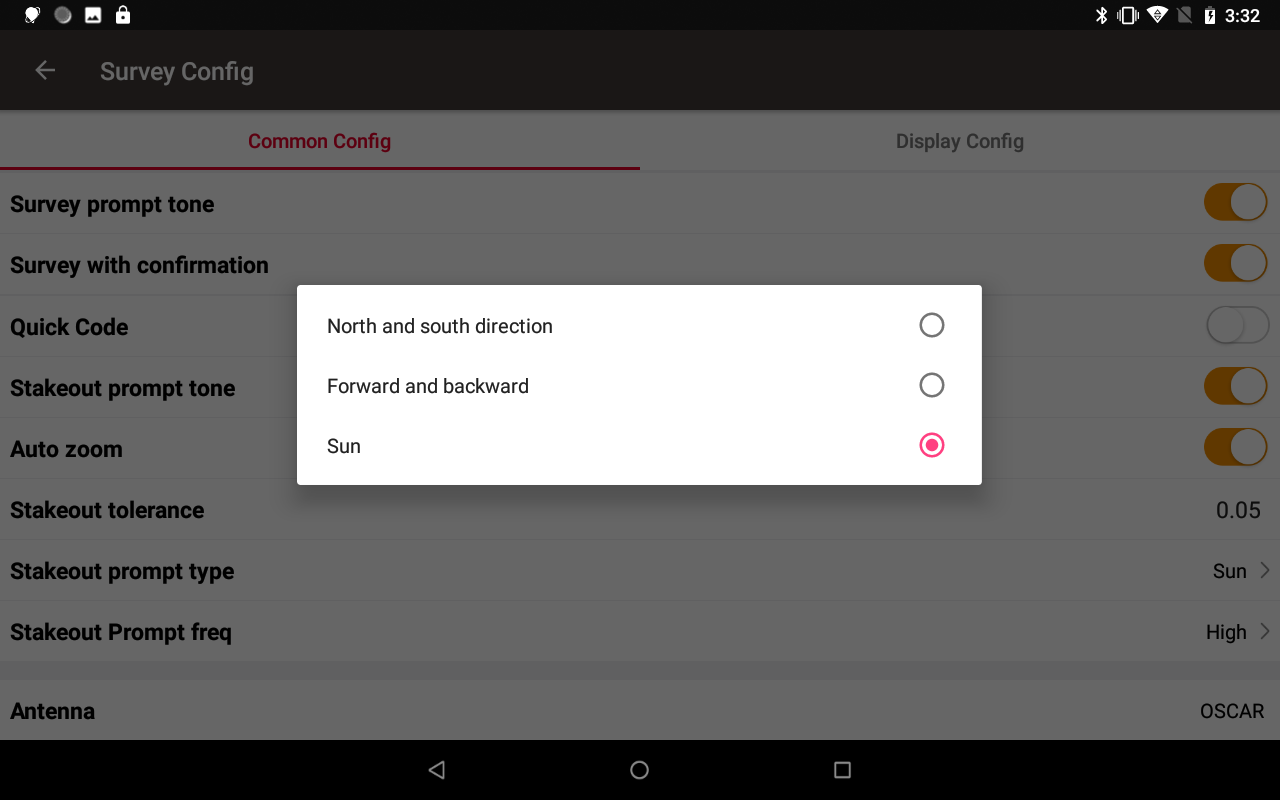Calculation of Solar Azimuth and Application in Stakeout
Chenge Zang, Tersus GNSS 25 June, 2025
According to the solar orbit law, the azimuth and altitude angles of the Sun at a specific time and a certain latitude and longitude position can be accurately calculated in the local site coordinate system. The calculation of the exact position of the sun has been widely applied in various fields, such as meteorology and military. Similarly, in the engineering survey, particularly during the stakeout process, the Sun’s azimuth and the direction of the pole’s shadow can be used as a reference to easily determine the direction of the target. This can significantly help in reaching the target more quickly. This paper will introduce the process of calculating the Sun’s azimuth and its application in the stakeout process.
Calculation of Solar Azimuth
The first step is to calculate the Declination and Hour Angle of the Sun relative to the Earth at that specific moment in time. Due to the Earth's rotation and the tilt of its axis, the position of the Sun changes throughout the year. To begin, it is necessary to use the time to calculate the declination, which is the angle between the Sun and the plane of the Earth's equator at that moment, and the hour angle, which represents the time difference between the Sun's longitude and the observer's longitude. The Earth's rotation period is approximately 365.2422 days, and considering leap year adjustments, the most accurate calculations are done using the Julian date. If cumulative day of the year are used, the method can be simplified using a simple approximation or an astronomical algorithm.

δ = arcsin( sinε × sinL )
H= 15 × (UTC + λ / 15 - 12)
where ε is the angle of inclination of the earth's axis, and L is the sun's ecliptic longitude, which can be deduced from the time. The angle of solar declination reaches its maximum near the equinoxes, about 23.44 degrees. λ is the local longitude, which is used to calculate local solar time.
With declination and hour angle, it is possible to calculate the equivalent of the local solar altitude angle α and solar azimuth angle A at that specific moment in time.

α = arcsin( sinφ × sinδ + cosφ × cosδ × cosH )
A = arccos((sinδ - sinα × sinφ)/(cosα × cosφ ))
It should be noted that when the hour time H<0, it indicates the before noon; when the hour time H>0, it indicates the after noon, then A = 360°-A.
Application in Stakeout
In the field of engineering surveying, during the stakeout process, the work of determining the direction of the target can be simplified by determining the direction of movement relative to the sun by comparing it with the calculation of the azimuth angle of the sun. For example, when facing the Sun, movement will be to the right, while facing the shadow of the pole will direct movement to the left. This method enables orientation without compass and removes the need for absolute directional judgments of north or south. It is a valuable technique in the field during stakeout operations.

In Tersus Nuwa application, select “Sun” as the Stakeout Prompt Type in the configuration, the software uses the above method to accurately calculate the azimuth angle of the sun, and gives the indication of the forward and backward movement relative to the sun, which helps the user to arrive at the target point quickly in this mode.
About Tersus GNSS Inc.
Tersus GNSS is a leading Global Navigation Satellite System (GNSS) solution provider. Our offerings and services aim to make centimeter-precision positioning affordable for large-scale deployment.
Founded in 2014, we have been pioneers in design and development GNSS RTK products to better cater to the industry’s needs. Our portfolios cover GNSS RTK & PPK OEM boards, David GNSS Receiver, Oscar GNSS Receiver, MatrixRTK [GNSS CORS Systems] and inertial navigation systems.
Designed for ease of use, our solutions support multi-GNSS and provide flexible interfaces for a variety of applications, such as UAVs, surveying, mapping, precision agriculture, lane-level navigation, construction engineering, and deformation monitoring.
Sales inquiry: sales@tersus-gnss.com
Technical support: support@tersus-gnss.com
